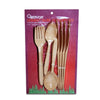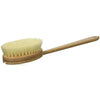Not All Dietary Fat is the Same! How to Lose Weight After 50

Reaching the age of 50 often prompts a significant shift in our approach to health and wellness. For many, this transition is accompanied by an increased focus on diet and exercise, with weight loss becoming a primary concern. However, one of the most misunderstood aspects of dieting is the role of dietary fats. Contrary to popular belief, not all fats are created equal. Understanding the differences between various types of fats can lead to dramatic improvements in weight management and overall health.
The Importance of Dietary Fats
Dietary fats play a critical role in our bodies. They are essential nutrients that support numerous cellular processes, including the absorption of vitamins, minerals, and enzymes. Without sufficient fat intake, these vital functions cannot perform optimally, leading to a range of health issues.
But here’s the kicker—not all dietary fats are beneficial. Some can be downright harmful, while others are incredibly supportive of good health. Let's break down the different types of fats and their impacts.
Types of Dietary Fats
-
Trans Fats:

- Found in partially hydrogenated oils like margarine, cooked seed oils, and some processed foods. Created naturally when oils high in polyunsaturated fats are heated. Such as canola, cottonseed, safflower, corn and peanut oil, which are all very high in polyunsaturated fat.
- Known to increase harmful LDL cholesterol and lower beneficial HDL cholesterol. Studies have found that only replacing 2% of caloric intake with non-trans fat reduced the risk of heart disease by 53% (1).
- Are highly oxidative and trigger macrophage reactions, tumor necrosis factor-a and interleukin-6 (2).
- Associated with an increased risk of heart disease, stroke, and type 2 diabetes and raise markers of endothelial impairment.
- Saturated Fats:
- Commonly found in animal products such as meat and dairy, as well as some plant oils like coconut oil.
- Can raise LDL cholesterol levels, but recent research suggests they might not be as harmful as once thought.
- Moderation is key; replace some saturated fats with healthier options when possible.
- One of the healthiest saturated fats is coconut oil, but needs to be unrefined and preferably raw or cold pressed.
- Monounsaturated Fats:
- Abundant in avocados, nuts, and olive oil.
- Known to improve cholesterol levels and reduce the risk of heart disease.
- Can also help manage blood sugar levels.
- Polyunsaturated Fats:
- Found in fatty fish, flaxseeds, most seed oils and walnuts.
- Include omega-3 and omega-6 fatty acids, which are essential for brain function and cell growth.
- Omega-3s, in particular, are highly beneficial for reducing inflammation and protecting heart health.
The Best Way to Lose Weight After 50
Understanding the different types of dietary fats is just one piece of the puzzle. Incorporating healthy fats into your diet while focusing on overall nutrition and lifestyle changes can significantly impact weight loss and health, especially after 50. Here’s how to get started:
1. Switch Your Dietary Fat Sources
Replace unhealthy trans and saturated fats with monounsaturated and polyunsaturated fats. Opt for foods like:

- Avocados
- Nuts and seeds
- Fatty fish (e.g., salmon, mackerel)
- Olive oil and flaxseed oil
2. Monitor Portion Sizes
Even healthy fats are calorie-dense, so it's crucial to consume them in moderation. Focus on balanced meals that include a variety of nutrients.
3. Stay Active
Combine dietary changes with regular physical activity. Aim for at least 150 minutes of moderate-intensity exercise per week, such as brisk walking, swimming, or cycling.
4. Prioritize Sleep
Quality sleep is essential for weight management and overall health. Aim for 7-9 hours of sleep per night to support your body’s recovery and optimal functioning.
5. Manage Stress
Chronic stress can lead to weight gain, particularly around the abdomen. Practice stress-reducing techniques such as meditation, yoga, or deep breathing exercises.
Conclusion
Losing weight after 50 doesn't have to be a daunting task. By understanding the differences between various types of dietary fats and making informed choices, you can achieve your weight loss goals and improve your overall health. Remember, not all fats are bad—some are essential for your wellbeing.
Ready to take the next step? Arm yourself with the right information and start making healthier choices today. For personalized guidance and support, consider consulting with a nutritionist or wellness coach.
Stay healthy and empowered, and remember, every small change counts!
References
1. Hu FB, Stampfer MJ, Manson JE, Rimm E, Colditz GA, Rosner BA, et al. Dietary fat intake and the risk of coronary heart disease in women. N Engl J Med 1997 Nov 20;337(21):1491e9.
2. Han SN, Leka LS, Lichtenstein AH, Ausman LM, Schaefer EJ, Meydani SN. Effect of hydrogenated and saturated, relative to polyunsaturated, fat on immune
and inflammatory responses of adults with moderate hypercholesterolemia.
J Lipid Res 2002;43:445e52.
1 comment

September 27, 2025
Immune Supplements: Top 10 Best Supplements to Boost Immunity
Are you looking for effective ways to enhance your body’s natural defense? Immune supplements have become popular choices to support the immune system booster function, especially in times of increased illness risk. With so many products...
Read more
September 27, 2025
Cell Phone and WiFi Safety: How to Prevent and Treat EMF Damage and Electrosensitivity
Electrohypersensitivity (EHS), often called electrosensitivity, has been a polarizing and increasingly relevant issue over the past decade and a half. Since the number of people identifying with these symptoms continues to grow exponent...
Read more
September 27, 2025
Raw Carrots: Nature’s Antibacterial & Antiseptic Food
For most of us, carrots are simply a crunchy snack or a source of vitamin A. But according to researcher Ray Peat, PhD, raw carrots offer something more unusual: they act as a kind of natural antiseptic inside the gut, helping to contro...
Read more




Si ay alguien que hable español?
Leave a comment